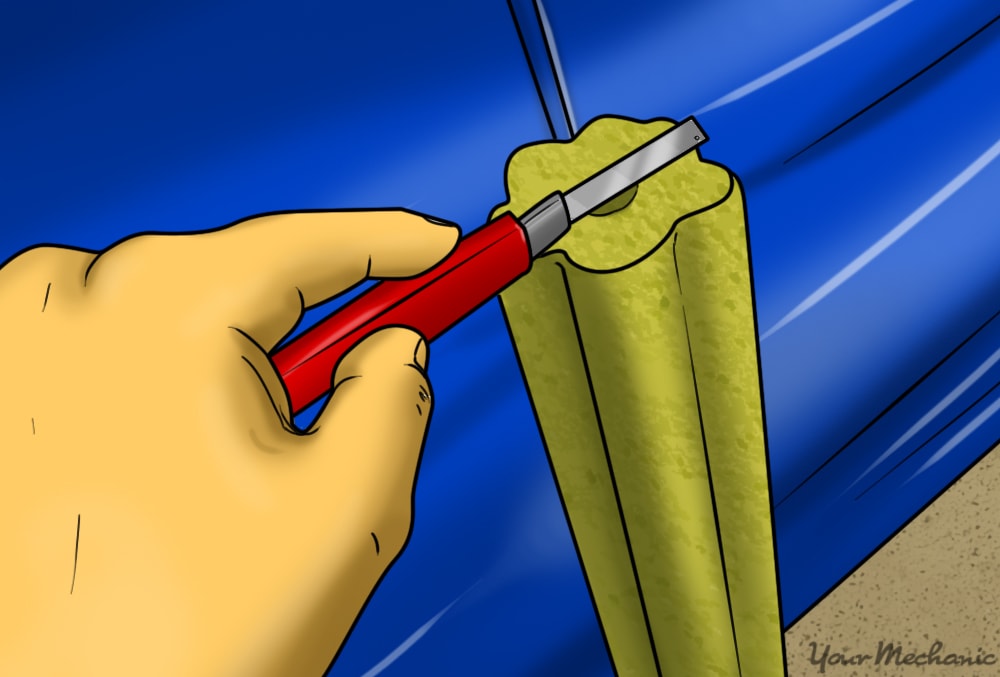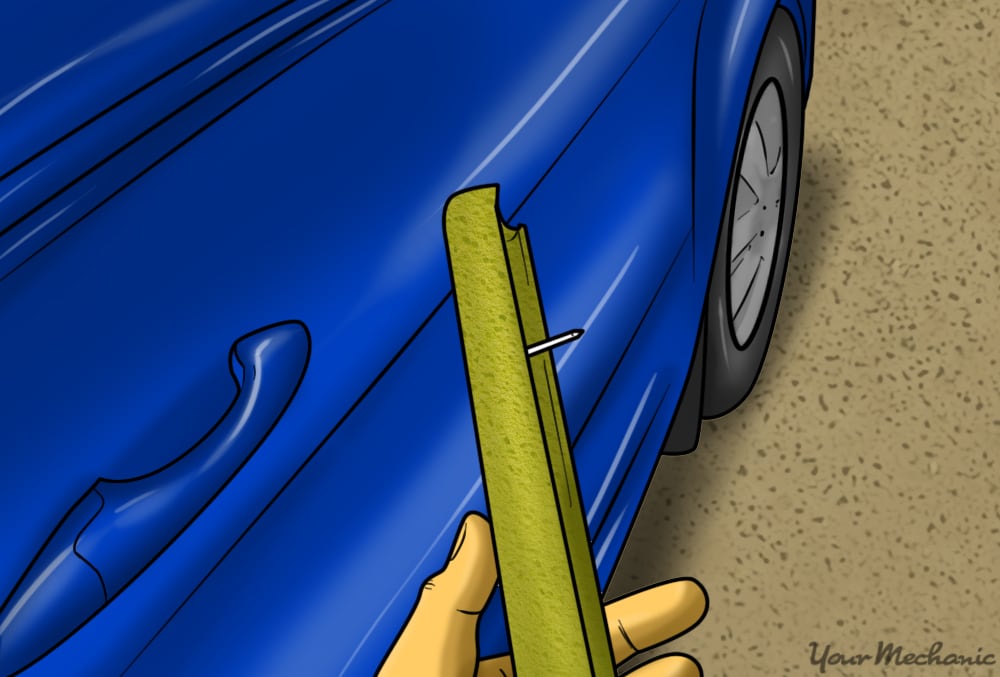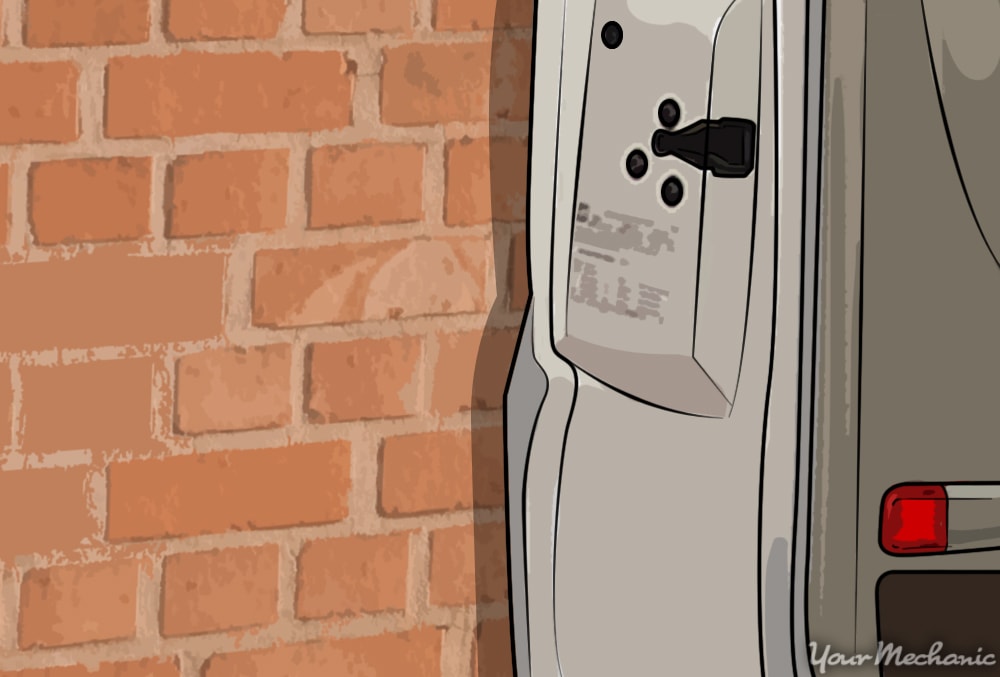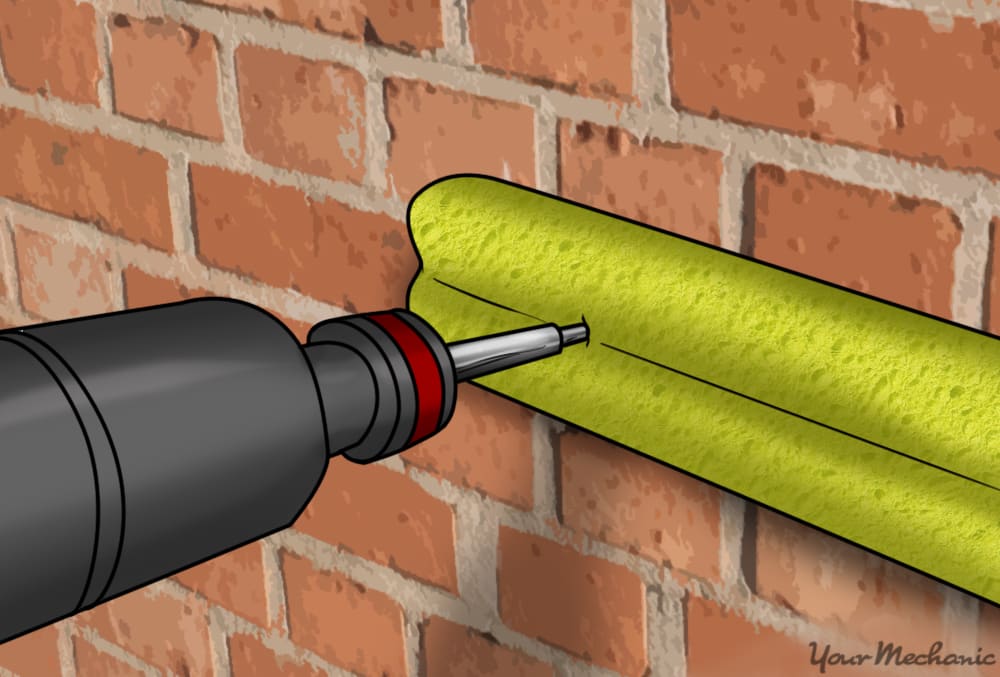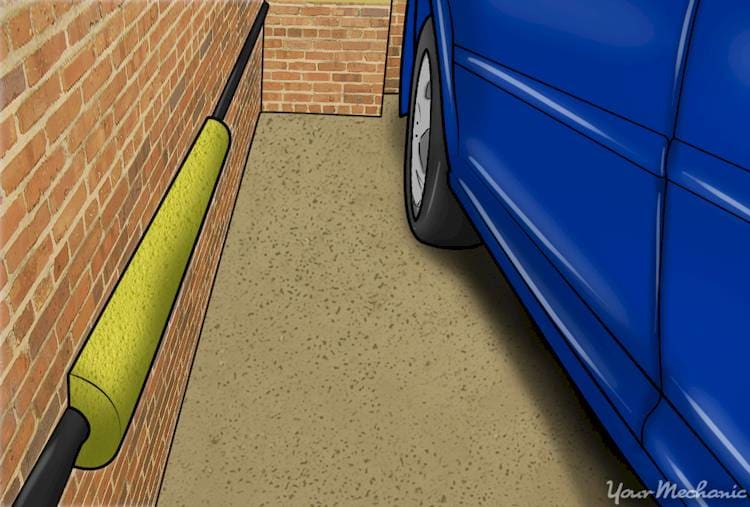

If you have ever swung open a car door and accidentally hit a garage wall, you know how simple it is to scratch or dent your vehicle. It is difficult, however, to always be mindful of opening doors carefully and with control, especially if you are in a rush or transferring loads in and out of your car. Add in kids and other passengers, and it is even harder to protect your doors from being damaged in the close quarters of a garage.
Instead of trying to control those opening and closing your car doors, it just makes sense to instead cushion the walls in the event of a collision. A pool noodle or two costs very little, and this little car hack can provide the padding you need to keep your car safe from damage.
Part 1 of 1: Installing a pool noodle to protect your car
Materials Needed
- Drywall screws (four per pool noodle)
- Exacto knife
- Pool noodle(s)
- Screwdriver (electric or non-electric)
Step 1: Cut the pool noodle in half longwise. Using an exacto or similar knife, cut the pool noodle in half longwise.
Step 2: Push a drywall screw through each end of the pool noodle half. Push the screw through the outside of the pool noodle so that the pointed end of the screw is exposed on the underside (or what was originally the center) of the noodle.
Step 3: Identify where you need to place the pool noodle. With your car parked in its regular spot in the garage, carefully open each door that could potentially hit a wall.
Take note of where the car door could collide with the wall without opening it far enough to actually touch it.
This is where you should center your pool noodle on the wall. You can mark the area with a pencil if you like, but this is not an exact science and can normally be achieved by memory. If you have a four-door car, you will need at least two pool noodle halves to protect the side of your car that could potentially be damaged by swinging doors. If both the driver’s and passenger’s side of your car are close to garage walls, you will need pool noodles on both sides.
Step 4: Hold the pool noodle in place and screw the drywall screw into the garage wall. Do not screw it in too tightly or it may tear a large hole in the pool noodle, which would then simply fall to the ground.
Insert the screw so that the head meets the noodle’s surface without pushing it in any further. Repeat for any other necessary pool noodles.
It does not take a lot of time or skill to install pool noodles on your garage walls, and it is also cheap. This small investment in materials and effort can save a lot of money. Having to repair scratches and dings from your car doors swinging into your garage walls is far more of a hassle and expense than using simple tools and materials to take this preventative measure.


